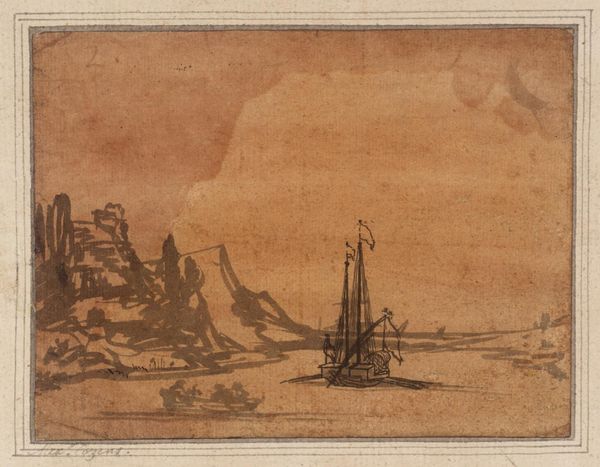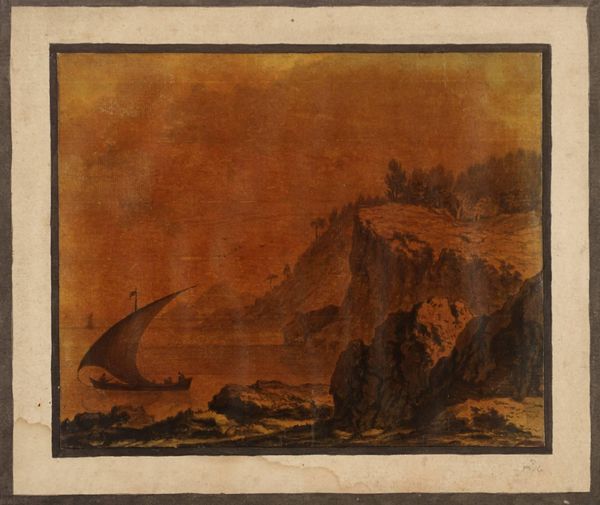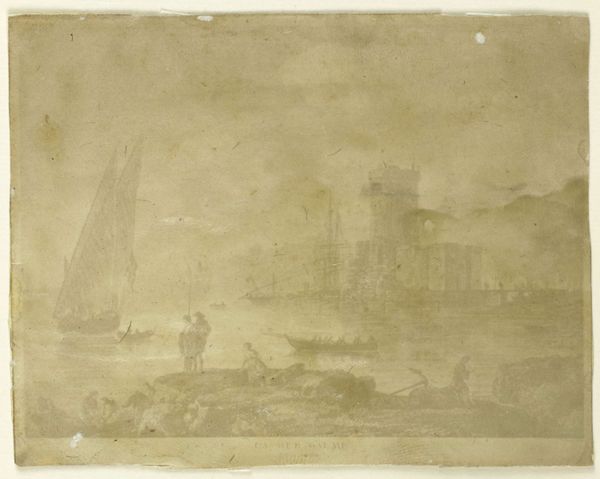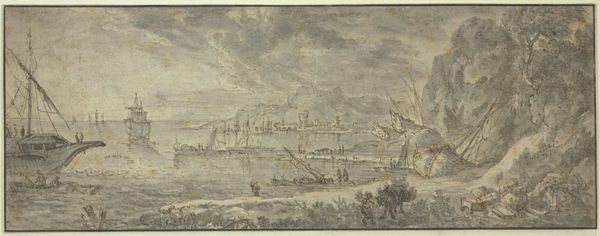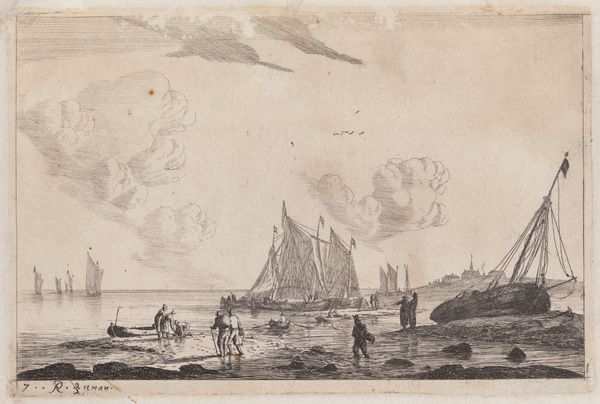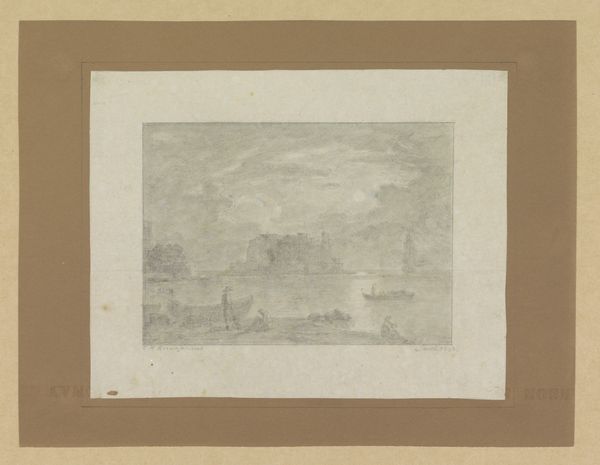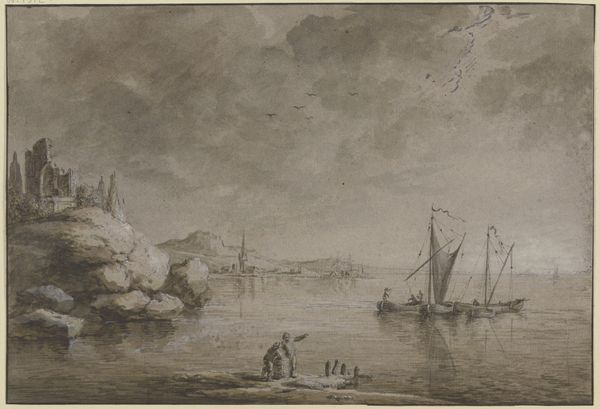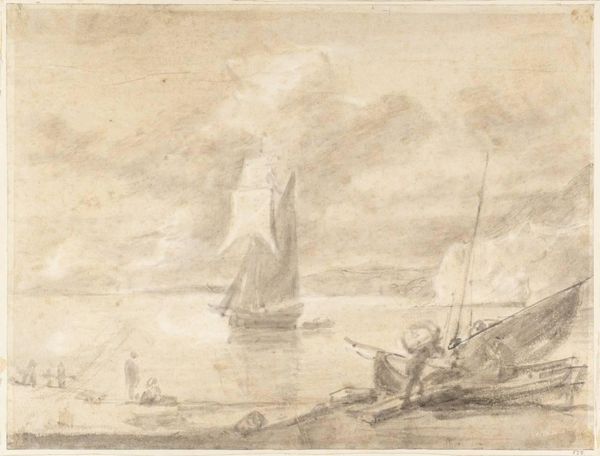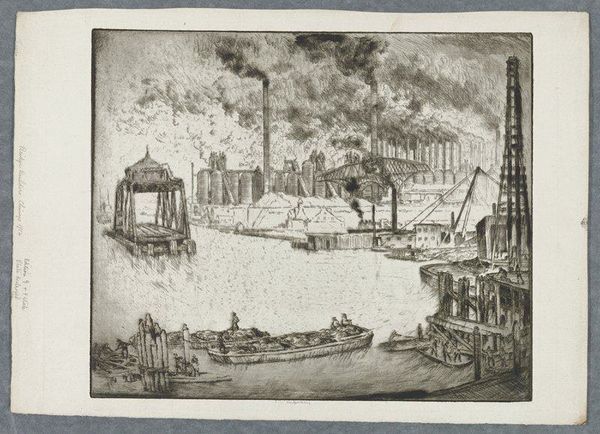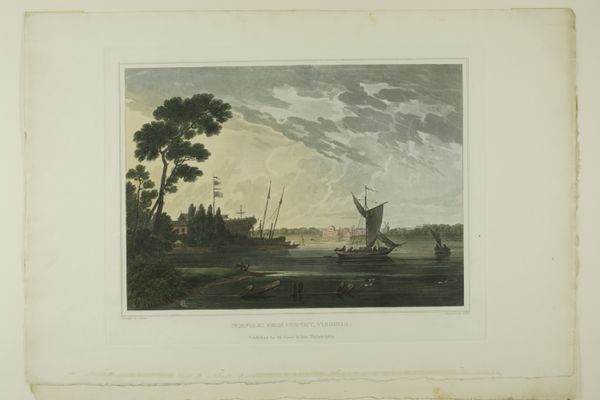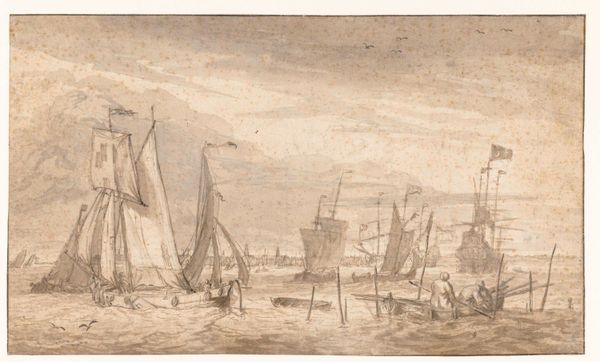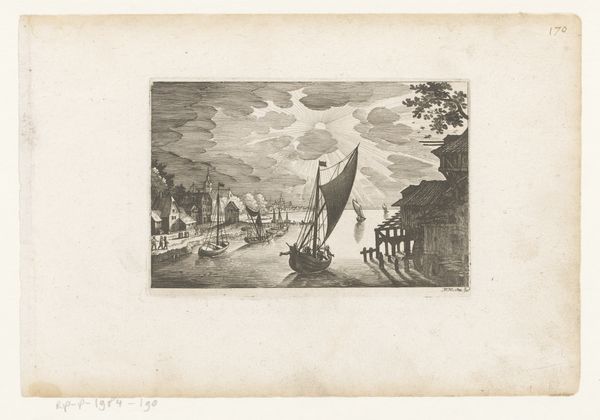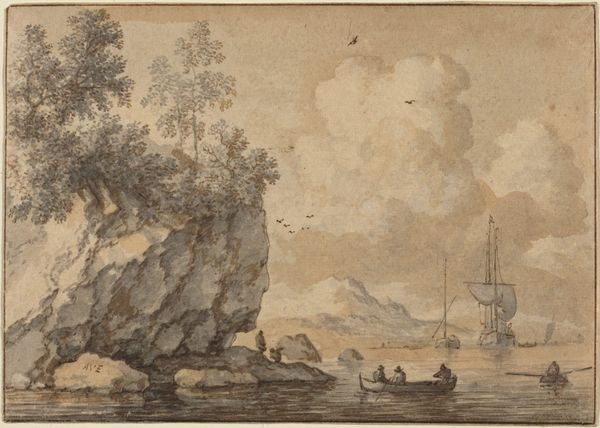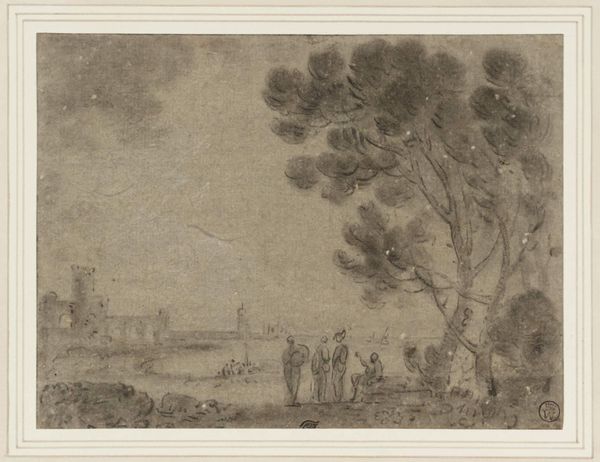
Dimensions: support: 163 x 220 mm
Copyright: CC-BY-NC-ND 4.0 DEED, Photo: Tate
Curator: Alexander Cozens, born in 1717, painted this watercolor called "A Bay with Ships; Figures in the Foreground." It’s a small work, only about 16 by 22 centimeters. Editor: It looks like a stage set, almost monochromatic with that warm brown wash. The textures suggest a rough paper, which really emphasizes the material. Curator: Cozens was a drawing master catering to the British elite. This piece would have been part of a larger visual culture centered on the picturesque, influencing landscape painting. Editor: I wonder about the specific pigments. The brown feels so earthy, linked directly to the landscape it depicts, and how readily available was it? Did that affect its appeal for amateurs? Curator: The accessibility of watercolor aligned with Enlightenment ideals about democratization of knowledge. Art became a tool for understanding the world, not just for the aristocracy. Editor: True, but the layering, the control of wash… that speaks to developed skill. Maybe access to materials wasn't enough; there's still a craft here beyond the social mobility it represents. Curator: A perfect summary, reminding us that artistic creation always operates at multiple levels. Editor: Yes, a delicate dance between materials, markets, and the meanings we project onto them.
